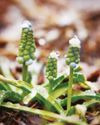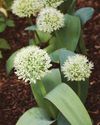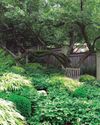
1 | For lots of these pretty plumes, water astilbe regularly or site it where the soil stays consistently moist. Then you can grow other moisture-loving companions, such as queen of the prairie.
Botanical Names
Chinese astilbe Astilbe chinensis
Japanese astilbe Astilbe japonica
Queen of the prairie Filipendula rubra
Star astilbe Astilbe simplicifolia
Astilbe is one of those go-to perennials that brings so much to the garden. Its distinctive blooms range from bright and bold to soothing pastels, and they last for weeks- even months when you have the right combination of astilbes. Flower plumes come in different shapes, from stiffly upright, like the pink blooms at right, to loose and drapey. In addition, the ferny pest- and disease-free foliage provides great texture for your shade garden, and deer and rabbits usually give it a pass. Astilbe can even grow in full sun if you have a spot with plenty of moisture.
Though there are 25 species, just a few of them are the primary source for most of the hybrids you find at the garden center: Japanese astilbe is an early summer bloomer. Chinese astilbe and smaller star astilbe flower in midsummer.
Let's explore how you can design with and grow gorgeous plants like these.
Grow Gorgeous Astilbe
2 | Terrific texture Besides beautiful flowers, astilbe’s deeply dissected leaves provide good contrast when paired with other leaf shapes, such as the smooth, round foliage of tall sedum.
هذه القصة مأخوذة من طبعة Issue 171 - June 2023 من Garden Gate.
ابدأ النسخة التجريبية المجانية من Magzter GOLD لمدة 7 أيام للوصول إلى آلاف القصص المتميزة المنسقة وأكثر من 9,000 مجلة وصحيفة.
بالفعل مشترك ? تسجيل الدخول
هذه القصة مأخوذة من طبعة Issue 171 - June 2023 من Garden Gate.
ابدأ النسخة التجريبية المجانية من Magzter GOLD لمدة 7 أيام للوصول إلى آلاف القصص المتميزة المنسقة وأكثر من 9,000 مجلة وصحيفة.
بالفعل مشترك? تسجيل الدخول

Backyard Tornado
\"HE WHO SEARCHES FOR SPRING WITH HIS KNEES IN THE MUD FINDS IT, IN ABUNDANCE.\" - ALDO LEOPOLD

Front-of-the-Border "Wow!" Power
When it comes to easy-care plants that bring a lot of punch to the border, 'Ivory Queen' Turkestan onion should be near the top of your shopping list.

GARDEN ESSENTIALS
MAKE GARDENING EASIER THIS YEAR

Elevate an Evergreen Hedge
Although an evergreen hedge looks suitable all year on its own, it's perfectly poised to become something even greater: a backdrop to a garden where flower after flower will unfurl with such drama, you just might find yourself stepping outside and offering your applause.

One Garden, Two Worlds
In this colorful and welcoming garden, sunny, flower-filled front borders transition to a shady backyard hideaway.

on edge
Four garden pros share their go-to edging techniques.

DIANTHUS
Add fragrance, vivid color and timeless charm with this reliable, cold-hardy perennial.

2025's Best New Plants!
Are you ready to start planning for next year's garden? A few new plants might be just what you need to bring those dreams to reality.

Solve Garden Problems With Ground Covers
Are you tired of coaxing turfgrass to grow in difficult spots? In her book Groundcover Revolution, Kathy Jentz says that ground covers can be the solution to these struggles.

The Romance of Spring
With the arrival of spring, emerging perennials fill the garden with soft texture, restoring life to the harsh, often barren landscape of winter.